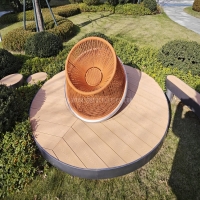Welcome to the website for landscape facilities products and knowledge.
How does the table’s design support ergonomic posture during long meetings or work sessions?
Modern ergonomic table design directly addresses the physical challenges of prolonged sitting through several intentional features. Adjustable height mechanisms stand as the cornerstone of ergonomic tables, allowing users to position their work surface at precisely the correct level relative to their chair height and body proportions. This customization ensures forearms can rest parallel to the floor with elbows at a 90-degree angle, preventing shoulder strain and promoting neutral wrist positioning.
The incorporation of sufficient knee space and legroom beneath the table represents another critical design element. Unlike traditional tables with obstructive supports, ergonomic designs provide clear space that enables users to sit close enough to maintain proper spinal alignment without compressing thighs or restricting blood flow. Many contemporary models further enhance comfort through curved or waterfall edges that reduce pressure on sensitive forearm and wrist areas.
Advanced ergonomic tables often integrate subtle negative tilts that gently angle work surfaces away from the user. This positioning encourages a more natural reading and writing posture, reducing the tendency to hunch forward and strain neck muscles. When combined with appropriate monitor placement and supportive seating, these table features create a comprehensive system that actively supports the spine's natural curvature throughout extended work periods, minimizing fatigue and preventing the development of chronic postural issues.
Related search:

Recommendation
Swivel chair-Specialty steel structure woven rattan leisure chair with rotatable design